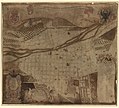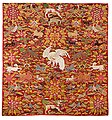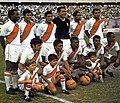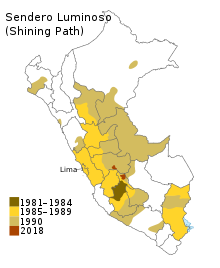Portal:Peru
Introduction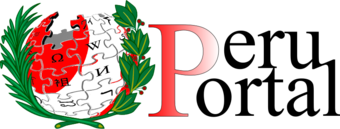
Peru, officially the Republic of Peru, is a country in western South America. It is bordered in the north by Ecuador and Colombia, in the east by Brazil, in the southeast by Bolivia, in the south by Chile, and in the south and west by the Pacific Ocean. Peru is a megadiverse country with habitats ranging from the arid plains of the Pacific coastal region in the west to the peaks of the Andes mountains extending from the north to the southeast of the country to the tropical Amazon basin rainforest in the east with the Amazon River. Peru has a population of over 32 million, and its capital and largest city is Lima. At 1,285,216 km2 (496,225 sq mi), Peru is the 19th largest country in the world, and the third largest in South America. Peruvian territory was home to several cultures during the ancient and medieval periods, and has one of the longest histories of civilization of any country, tracing its heritage back to the 10th millennium BCE. Notable pre-colonial cultures and civilizations include the Caral–Supe civilization (the earliest civilization in the Americas and considered one of the cradles of civilization), the Nazca culture, the Wari and Tiwanaku empires, the Kingdom of Cusco, and the Inca Empire, the largest known state in the pre-Columbian Americas. The Spanish Empire conquered the region in the 16th century and Charles V established a viceroyalty with the official name of the Kingdom of Peru that encompassed most of its South American territories, with its capital in Lima. Higher education started in the Americas with the official establishment of the National University of San Marcos in Lima in 1551. Peru's population includes Mestizos, Amerindians, Europeans, Africans and Asians. The main spoken language is Spanish, although a significant number of Peruvians speak Quechuan languages, Aymara, or other Indigenous languages. This mixture of cultural traditions has resulted in a wide diversity of expressions in fields such as art, cuisine, literature, and music. (Full article...) Entries here consist of Good and Featured articles, which meet a core set of high editorial standards.
 General Edwin Donayre (born January 8, 1952) is a Peruvian politician, a former Congressman and a retired military officer who is wanted by the police on corruption charges. Donayre previously served as Commanding General of the Peruvian Army, commander of the Center Military Region, the Southern Military Region, and the 2nd Infantry Brigade. He assumed the role of commanding general on December 5, 2006, replacing General César Reinoso, who resigned amid accusations of corruption. During his tenure, Donayre was accused of corruption and obstructing inquiries into human rights violations. He was also at the center of an international controversy when a video surfaced in the media showing him making anti-Chilean remarks at a private party. He retired on December 5, 2008, and was replaced by General Otto Guibovich. (Full article...)Selected image Photo credit: Valentín Ramírez
The city of Arequipa is the capital of the Arequipa Region in southern Peru. With a population of around 800,000 it is the second most populous city of the country. Arequipa lies in the Andes mountains, at an altitude of 2,380 meters (7740 feet) above sea level, overseen by the snow-capped volcano El Misti. The city has many colonial-era Spanish buildings built of sillar, a pearly white volcanic rock, from which it gets the nickname La Ciudad Blanca ("The White City"). (more...) Selected battleThe Battle of Miraflores occurred on January 15, 1881 in the Miraflores District of Lima, Peru. It was an important battle during the War of the Pacific that was fought between Chile and the forces of Peru. The Chilean army led by Gen. Manuel Baquedano defeated the army commanded by Nicolás de Pierola guarding the second defensive line of the Peruvian capital city. Two days later, Lima, the capital city of Peru was occupied by Chilean troops. Gen. Baquedano's forces marched into Lima triumphant, while Peru's president and his officers fled into the interior, leaving the country without any government. Although the fall of Lima, the war continued between the occupation army and the troops of Andres Caceres for another three years. During the occupation of Lima, Peru's National Library was set on flames, while a number of other monuments were ransacked by Chilean forces and taken as war trophies. (more...) In this month
General imagesThe following are images from various Peru-related articles on Wikipedia.
Selected article -The Peruvian conflict is an ongoing armed conflict between the Government of Peru and the Maoist guerilla group Shining Path and its remnants. The conflict began on 17 May 1980, and from 1982 to 1997 the Túpac Amaru Revolutionary Movement waged its own insurgency as a Marxist–Leninist rival to the Shining Path. As fighting intensified in the 1980s, the Peruvian government had one of the worst human rights records in the Western Hemisphere; Peru experienced the most forced disappearances in the world during the period while the Peruvian Armed Forces acted with impunity throughout the conflict, sometimes massacring entire villages. It is estimated that there have been between 50,000 and 70,000 deaths, making it the bloodiest war in Peruvian history, since the European colonization of the country. The high death toll includes many civilian casualties, due to deliberate targeting by many factions. The Indigenous peoples of Peru were specifically targeted by killings, with 75% of those killed speaking Quechua as their native language. Since 2000, the number of deaths has dropped significantly and recently the conflict has become dormant. (Full article...)Did you know (auto-generated) -
CategoriesRelated portalsSelected quote -
1st Protector of Peru José de San Martín 1778–1850
Basic facts & figuresMore did you know...
Peru TopicsRecognized content
Featured articlesFeatured listsGood articles
WikiProjectsThings you can do
New articlesThis list was generated from these rules. Questions and feedback are always welcome! The search is being run daily with the most recent ~14 days of results. Note: Some articles may not be relevant to this project.
Rules | Match log | Results page (for watching) | Last updated: 2024-05-18 21:37 (UTC) Note: The list display can now be customized by each user. See List display personalization for details.
Associated WikimediaThe following Wikimedia Foundation sister projects provide more on this subject:
Discover Wikipedia using portals | |||||||||||||||






